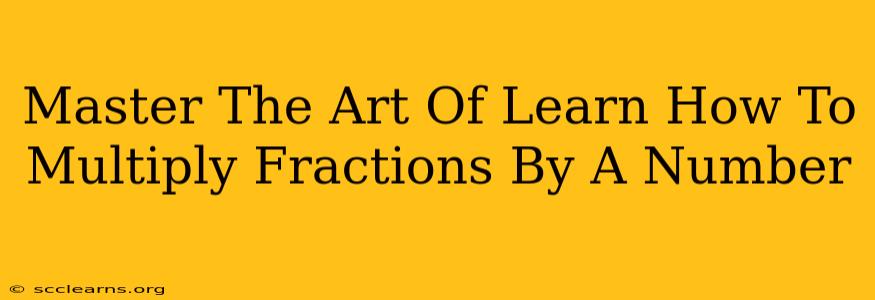Multiplying fractions by whole numbers might seem daunting at first, but with a little practice, it becomes second nature. This comprehensive guide breaks down the process step-by-step, equipping you with the skills and confidence to tackle any fraction multiplication problem. We'll explore various techniques and offer helpful tips to make learning fun and effective.
Understanding the Fundamentals
Before diving into the multiplication process, let's review the basics. A fraction represents a part of a whole. It consists of a numerator (the top number) and a denominator (the bottom number). The denominator indicates how many equal parts the whole is divided into, while the numerator shows how many of those parts are being considered.
A whole number, on the other hand, represents a complete unit. When multiplying a fraction by a whole number, we're essentially finding out what that many fractional parts add up to.
Method 1: The "Multiply the Numerator" Approach
This method is the most straightforward. To multiply a fraction by a whole number:
-
Rewrite the whole number as a fraction: Any whole number can be written as a fraction with a denominator of 1. For example, 3 can be written as 3/1.
-
Multiply the numerators: Multiply the numerator of the fraction by the numerator of the whole number (which is the whole number itself).
-
Keep the denominator the same: The denominator remains unchanged.
-
Simplify (if necessary): Reduce the resulting fraction to its simplest form by finding the greatest common divisor (GCD) of the numerator and denominator and dividing both by it.
Example:
Multiply 2/5 by 3.
- Rewrite 3 as 3/1.
- Multiply the numerators: 2 x 3 = 6
- Keep the denominator: The denominator remains 5.
- The result is 6/5. This is an improper fraction (numerator is larger than the denominator), which can be converted to a mixed number: 1 1/5.
Method 2: Visual Representation
Visualizing the problem can be incredibly helpful, especially for beginners. Use diagrams or drawings to represent the fractions. For example, if you're multiplying 1/4 by 3, draw three groups of one-quarter. Counting the total shaded parts will give you the answer.
Method 3: Repeated Addition
This method is particularly useful for understanding the concept. Multiplying a fraction by a whole number is equivalent to adding the fraction that many times.
Example:
Multiply 1/2 by 4. This is the same as 1/2 + 1/2 + 1/2 + 1/2 = 4/2 = 2.
Tips and Tricks for Success
- Practice Regularly: Consistent practice is key to mastering fraction multiplication. Start with simple problems and gradually increase the difficulty.
- Use Visual Aids: Diagrams and manipulatives can make the process more intuitive.
- Simplify Early and Often: Simplifying fractions before multiplying can make the calculation easier.
- Check Your Work: Always double-check your answer to ensure accuracy.
Mastering Fractions: A Stepping Stone to Advanced Math
Understanding fraction multiplication is a fundamental skill that forms the base for more complex mathematical concepts. By mastering this skill, you'll build a strong foundation for future learning in algebra, geometry, and calculus. Don't hesitate to seek extra help if needed – practice and understanding are the keys to success! Remember, patience and persistence will lead you to mastery.

